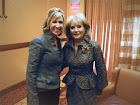
The UK is taking extra steps to get artificial food dyes out of products, but the U.S. is not complying. Companies who sell to both countries are actually changing the ingredients for the UK and leaving the unnatural chemicals in the U.S. versions of the same food! This infuriates me. We know the dyes have no benefit and they may cause harm. Why in the world are they in food? Because the food coloring makes them look more appetizing. Isn't that disgusting! I would love to eat more naturally and never have processed food in my house. I just can't take that on right now. It's too expensive and too stressful. I just buy a lot of fresh fruit and try to avoid the processed stuff as much as possible. I wish the artificial dyes would just get banned in the U.S.
FROM NBC: Your child eats some rainbow-colored candy and there's a good chance he or she will soon be bouncing off the walls. Is the sugar to blame? or the stuff that gives the candy its bright color? Starting this year, food manufacturers in Britain have been asked to get artificial dyes out of their products. Health and safety officials there say it's because some of these chemicals could be causing behavioral problems in kids.
Beth Tribble/Mother "Michael would get easily frustrated. He would cry. He would get horrible headaches. He would throw up." Like a lot of kids his age, michael tribble enjoyed candy, orange crackers, sweet yogurt and pudding. but his mother noticed that after he ate these brightly colored foods, his behavior would change. Beth Tribble/Mother: "I think a lot of the behavioral issues that parents are seeing is a direct result of the additives." Specifically she's talking about artificial food dye, used in thousands of foods. things like yellow 6, used to make waffles a golden yellow and blue1 and red 40. used to give these yogurts their blue and pink hues."
Michael Jacobson/CSPI: "It's not that the food dyes are the underlying cause of ADHD or hyperactivity but if a kid is predisposed to it then the dyes can trigger outbursts and behavioral outbursts." Michael Jacobson is the executive director of the center for science in the public interest. he says research dating back to 1980 has linked food dyes with behavioral problems in children. Michael Jacobson / CSPI: "Some children, certainly not all children, react sharply. They ... lose control over their impulses. Physically, they jump around, they might yell, scream out."
A 2007 study by the uk's food standards agency, the British equivalent of the Food and Drug Administration, found that 8 and 9 year olds who drank beverages with food dyes were more likely to become hyperactive. Those findings prompted the agency to ask food manufacturers to get rid of six artificial colors in British foods by the end of 2009. Jacobson says most companies have complied, but they haven't made changes to their U.S. products.
For example, these strawberry Nutrigrain bars purchased in the U.S. are made with red 40, but the same strawberry snack in the UK uses paprika extract for color. Michael Jacobson / CSPI: "The foods would automatically be safer for kids and that really should be the bottom line." The FDA maintains that there isn't enough data to conclusively link these dyes with hyperactivity in children. a statement on the agency's web site says they reviewed the british study and found it does "not substantiate a link between color additives that were tested and behavioral effects." But for the Tribble family, they say getting the dyes out of their foods has made a big difference.
Beth Tribble / Mother: "He's more focused, he has more confidence. His handwriting is significantly improved. He can stay on task a whole lot better, but I think the biggest improvement is that he feels a whole better about himself." There is still a lot of controversy over this issue and the FDA maintains these dyes are safe. But some experts still feel that kids who might be predisposed to behavioral problems could be more sensitive to artificial food dyes.
In the USA, the following seven artificial colorings are permitted in food (the most common in bold) as of 2007[update]:
- FD&C Blue No. 1 – Brilliant Blue FCF, E133 (Blue shade)
- FD&C Blue No. 2 – Indigotine, E132 (Dark Blue shade)
- FD&C Green No. 3 – Fast Green FCF, E143 (Turquoise shade)
- FD&C Red No. 40 – Allura Red AC, E129 (Red shade)
- FD&C Red No. 3 – Erythrosine, E127 (Pink shade, commonly used in glacé cherries) [4]
- FD&C Yellow No. 5 – Tartrazine, E102 (Yellow shade)
- FD&C Yellow No. 6 – Sunset Yellow FCF, E110 (Orange shade)
-NewsAnchorMom Jen
What if you could look younger? Soderstrom Skin Institute was one of the first medical facilities to offer laser services in Central Illinois 20 years ago and today provides one of the most comprehensive laser treatment programs available. Call 674-7546 to schedule your FREE CONSULTATION today!




.jpg)













0 comments:
Post a Comment